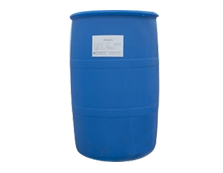Anionic surfactants can also be used to modify at. Jin Yeling and others modified dolomite attapulgite with stearic acid and used it to fill natural rubber and styrene butadiene rubber. The results show that the filling amount of dolomite Attapulgite Modified by stearic acid in the compound is greatly increased, which can reach 110 g / 100 g.

The tensile strength, 300% tensile strength, elongation at break and adhesion strength of the modified dolomite attapulgite filled rubber samples were 57.8%, 100%, 5.5% and 16% higher than those of light calcium filled rubber samples, respectively. The main reason should be that the silicon hydroxyl group on the surface of attapulgite and the carboxyl group in stearic acid form an organic stearic acid-base salt film on the surface of dolomite attapulgite.
In recent years, the research on the modification of layered silicate by surfactant and its application in rubber mainly focuses on montmorillonite and kaolin, but there are few reports on talc powder, mica and other aspects. This paper mainly introduces the research on montmorillonite and kaolin.
The surface of kaolin particles is hydrophilic and oil repellent, which makes it difficult to disperse in rubber and can not achieve the ideal reinforcement effect. Therefore, the filler must be surface modified to enhance the interfacial compatibility between kaolin particles and organic polymers. The main modification methods are as follows.
1、 Kaolin was modified by anionic surfactant. One end of stearic acid is long-chain alkyl. The other - end is carboxyl, which not only has certain compatibility with rubber, but also has physical and chemical adsorption with kaolin surface. As an anionic surfactant, it has obvious modification effect on kaolin. At the same time, stearic acid has lubrication effect, which can improve rubber processing performance. Wu Hongdan et al. Modified the surface of peeled kaolin with stearic acid to make the kaolin surface become an organophilic phase. The modified kaolin increased the tear strength of SBR / Kaolin Composite by 7 kn / m compared with that before modification.
2、 Kaolin was modified by coupling agent. The principle of modification is the same as that of modified montmorillonite. Yuan Xiaocheng et al. Studied the effects of calcined kaolin on the properties of chlorinated butyl rubber (CIIR) and brominated butyl rubber (BIIR) before and after modification γ- (triethoxysilicon) propyl] - tetrasulfide (Si-69) and titanate coupling agent can improve the dispersion of kaolin and improve the physical and mechanical properties of vulcanizate, among which Si-69 has the best comprehensive properties.
The three methods are compound modification. Liu zhuoqin and others treated the surface of nano kaolin with a solution composed of silane coupling agent and stearic acid or Cationic Surfactant CTAB and filled it with rubber, It is found that: (1) when nano kaolin is modified with coupling agent, adding an appropriate amount of CTAB can significantly reduce the amount of coupling agent, and its mechanism is adsorption solubilization; (2) The reinforcing effect of kaolin modified by silane coupling agent and stearic acid on rubber is better than that modified by silane coupling agent alone, and the reinforcing effect of modified nano kaolin is better than that of carbon black.